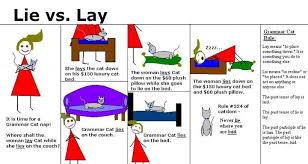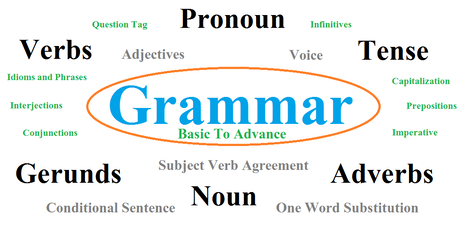 [The excerpt below comes from Medium.com. The link to the rest of the article can be found at the bottom of this post.] "Grammar is like a game. Some who are well-versed with the language learn grammar intuitively; some struggle with tenses, clauses, sentences, and so on. Below we put forward some effective ways to learn & improve English grammar. 1. Make a commitment Learning English grammar needs a lot of motivation. Once you are ready to begin studying, stick by it until the end. 2. Keep a grammar book at your disposal Keeping an English grammar book will allow you to revise what you have learnt in class, as well as force you to learn grammar as often as you can. 3. Utilize a grammar app Nowadays, everyone has a smartphone. Make use of it. Download a dictionary app and a grammar app. You can use it while commuting or in your free time." To read the rest of these tips, click on the following link: 12 Practical Tips for Learning and Improving English Grammar. 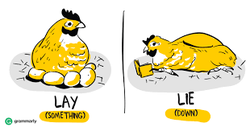 "All languages have their confusing words…words that sound the same, look the same, or have the same meaning. Especially confusing are words that have similar forms (for example, in different verb tenses) but are not used in exactly the same way (the present and past tense of “read,” with two different pronunciations, comes to mind). In my opinion, the irregular verbs “lay” and “lie” rank at the top of the list in terms of confusing forms and usage." To continue reading this article from esllibrary.com click here. 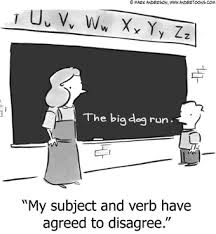 "Matching up singular or plural subjects with singular or plural forms of a verb is part of the process called agreement. This is easy in simple sentences: He admits that he is worried. [singular subject and verb] They admit that they are worried. [plural subject and verb] But there are some cases where the grammar is not so straightforward." To read more about subject verb agreement from Oxford Dictionaries.com click here. 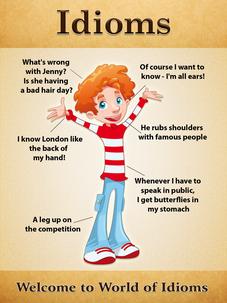 Have you ever been reading something in English and come across a phrase that just doesn't make sense? Or, maybe you are talking with someone in English, and he uses a very strange phrase, a phrase that seems to have nothing at all to do with what he is talking about? If you can answer "yes" to these questions, then you may have been the victim of an English idiom. Here are some examples: "A piece of cake" "It's all in your head" "Asleep at the wheel" "A taste of your own medicine" "Butterflies in my stomach" So, what is an idiom? "Idioms are words, phrases, or expressions that cannot be translated literally. For example, the idiom "Get the ball rolling" means "get a process started", but that meaning is not obvious from the individual words. English language has many idioms, and they are challenging for esl students to learn. The best way to understand an idiom is to see it in context. Here is a small dictionary of 100 English idioms and phrases with their meaning." To read more about idioms and to take a test to see which idioms you might know, click here. To learn about some commonly used English idioms, click here. Click here or here to review even more idioms. 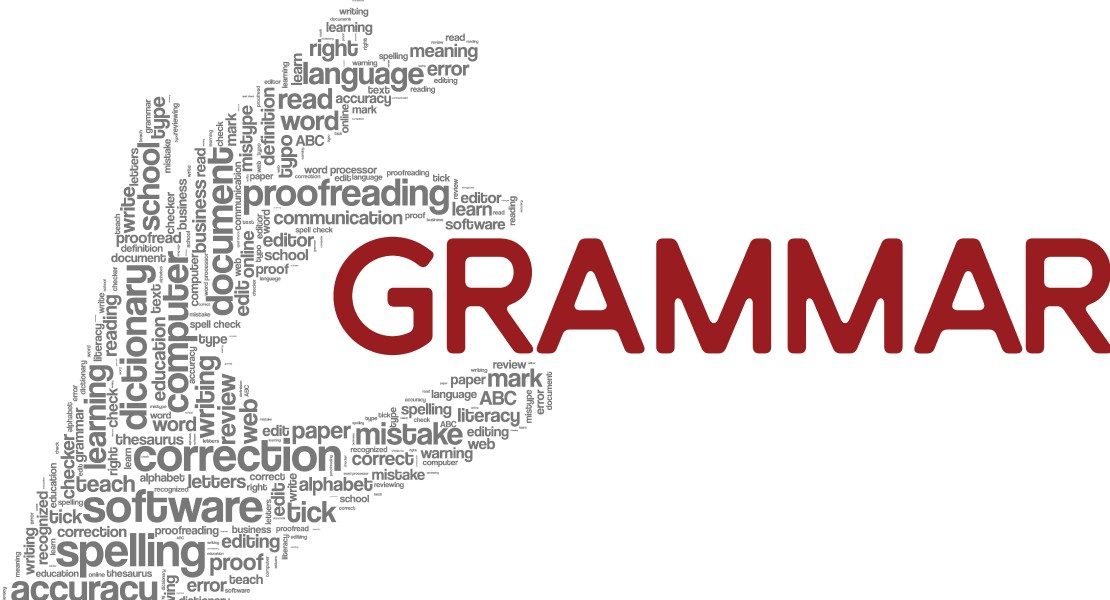 [Excerpt below taken from article entitled "Top 12 English Grammar Tips for Mastering the Language" by Katyaryabova] Grammar. Say this word out loud and at least one English student in the room will tremble! Let’s face it: studying English grammar isn’t always fun. It can be complex, difficult and sometimes even boring. Yet, we all keep learning and practicing the English grammar rules. Why? Because grammar knowledge is essential for communicating in English. Proper English grammar is one of the foundations of language proficiency. It’s necessary for your writing, speaking and comprehension. But here’s the good news: mastering English grammar isn’t impossible. In fact, with a few essential grammar tips, you can overcome many of the obstacles that English learners face. In this post, we’ll explore our top 12 tips for understanding English grammar and avoiding common mistakes. You’ll come out on top in the trickiest situations! To see these 12 tips, click here! 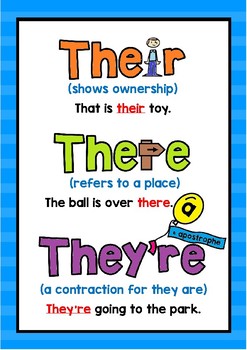 Do you ever get confused about when to use there, their or they're? What's the difference between these words?
There, their, and they’re are the big trio of commonly confused words. All three of them are pronounced the same, and the spelling differences don’t seem to do a good job of stopping people from mixing them up. To read more about how and when to use of these words, go to Grammarly.com by clicking here. To practice using these words correctly, click on the links below: Here's a video that you might find helpful. 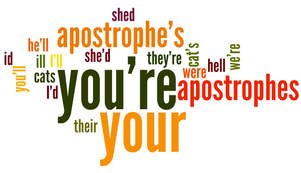 Apostrophes are used to show possession. However, you do not use an apostrophe after a possessive pronoun such as my, mine, our, ours, his, hers, its, their, or theirs. For example:
Read more at http://grammar.yourdictionary.com/grammar-rules-and-tips/5-most-common.html#FVgk9FeOQezHUWZP.99  Want to improve your writing? Well, there are some common errors that you might want to look for as your revise and edit your writing. Here's the first one: Error #1: Run-on Sentence or Comma Splice A run-on sentence is a sentence that joins two independent clauses without punctuation or the appropriate conjunction. A comma splice is similar to a run-on sentence, but it uses a comma to join two clauses that have no appropriate conjunction. Fixing a run-on sentence or a comma splice can be accomplished in one of five different ways:
Read more at 18 Most Common Grammar Mistakes 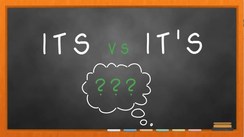 "Would you like to know the number one grammatical error? Hint: The word involved is small and it’s contained in this sentence." That’s right: its vs. it’s Yet the two rules are actually quite easy to remember." To continue reading this Grammar Tip posted by Grammarbook.com, and learn about when to use it and when to use it's, click here 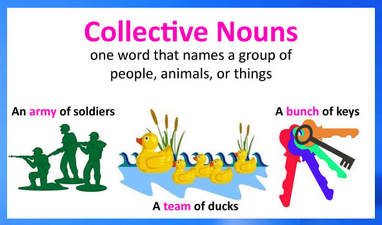 Do I use a singular or a plural verb with a collective noun? And what about when I want to use a pronoun to represent a collective noun? Do I use a singular or plural pronoun? Well, first of all, let's consider what a collective noun is. It is a noun that represents a group or a collection of things. Words like police, family, government, and committee are some examples. When using collective nouns, it is important to think about whether they require a singular or plural verb. It also important to use a correct pronoun when substituting for a collective pronoun. Here are two examples: My class always listens to its teacher during the day. Class is singular here, so I need to use the singular possessive pronoun (its). My class always turn in their assignments on time. In this instance, class is plural and I need to use a plural verb. How do you know the difference? It all depends on whether the group is acting as one or as individuals. To learn more about Collective Nouns , click here. |
AuthorMy name is Craig, and I've been teaching English for many years. I initially created this site for my students, but all English learners are welcome. I hope you find something helpful to you. Feel free to leave suggestions or ideas in the Comments section under any entry. Categories
All
|
